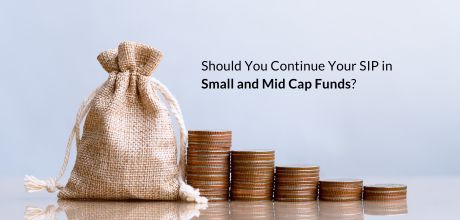3 things you didn’t know about Mutual Fund SIP investments

Mutual Fund SIPs are gaining immense popularity, with investments crossing the ?7,000 crore mark. But before you dive in, there are key aspects to understand. This blog explores why low returns in the early years aren’t necessarily bad, how volatility can work in your favor, and how some SIPs even offer free life insurance. Read on to make the most of your SIP investments!
As AMFI’s “Mutual Funds Sahi Hai” rings ubiquitously every time you switch on your TV, interest in Mutual Fund SIP investments continues to grow manifold. Per latest estimates, the industry’s Mutual Fund SIP book has recently gone past the 7,000 Crore mark – that’s an automatic inflow of Rs. 84,000 crores over the next twelve months! If you, like many others, have recently decided to go down the Mutual Fund SIP route, here are three things you need to know.
Low Returns are Not (Necessarily) a Bad Thing
Admittedly, Mutual Fund SIP returns over the past year or so half been quite dismal. However, before you get fed up and throw in the towel – know this: low returns, especially during the first few years of your SIP’s, are not necessarily a bad thing. How so? Low returns essentially imply that markets haven’t performed all that well since you started, and so you’ve been making bite sized investments into relatively depressed markets. When the tide turns, you’ll have accumulated a lot more units in the process than you’d have, if markets had linearly moved up! This could actually augment your long-term returns.
The More Volatile, The Better (in The Long Run)
Do you balk at the volatility associated with small cap and mid cap oriented mutual fund investments? Think again, especially when it comes to Mutual Fund SIP’s! The zigs and zags associated with volatile funds actually enhance the rupee-cost averaging aspect of your Mutual Fund SIP’s, which is why you’ll notice that short term woes notwithstanding, it is the volatile funds that invariably deliver better SIP returns over the long run! The caveat? You’ll need to buckle up for a rough ride, but the end will be worth it!
You can Attach a Life Insurance Cover to Your SIP – Free of Cost!
Three Asset Management Companies with Life Insurers as sister concerns now offer a free Life Insurance cover with their SIP’s. Others are likely to follow suit. They do so by including Mutual Fund SIP investors into a group term plan and bearing the cost themselves, without this impinging upon the expense ratios of their funds. All you need to ensure is that you continue running your SIP for at least 3 years for the cover to be in force. By the third year of your SIP, your death benefit could be as high as 100X the monthly SIP instalment! For a SIP investment of Rs. 50,000 per month, that’s a neat sum of Rs. 50 Lakhs.
Your Investing Experts
Relevant Articles
How To Select The Best Mutual Funds For Long Term Goals
Mutual funds offer a compelling way to invest for long-term goals, leveraging professional management and diversification to potentially achieve significant returns. But with a vast array of options available, selecting the best mutual funds for the long term can feel daunting. This guide will equip you with the knowledge to confidently navigate the mutual fund landscape and learn how to select the best mutual fund aligned with your long-term aspirations.
Should You Continue Your SIP in Small Cap Mutual Funds
Investing in small cap funds requires patience and discipline, especially during market corrections. By staying committed to your SIPs and focusing on long-term goals, you can leverage the power of rupee cost averaging and compounding. Don’t let short-term market noise dictate your strategy—remain focused, stay the course, and trust that your disciplined approach will yield results over time.
Systematic Withdrawal Plans (SWP): A Reliable Way to Generate Regular Income
An SWP allows investors to withdraw a predetermined amount from their mutual fund investments at regular intervals, such as monthly, quarterly or annually. The beauty of SWPs lies in their flexibility—they provide consistent income while allowing the remaining investment to continue growing.
.png)


_(2).jpg)